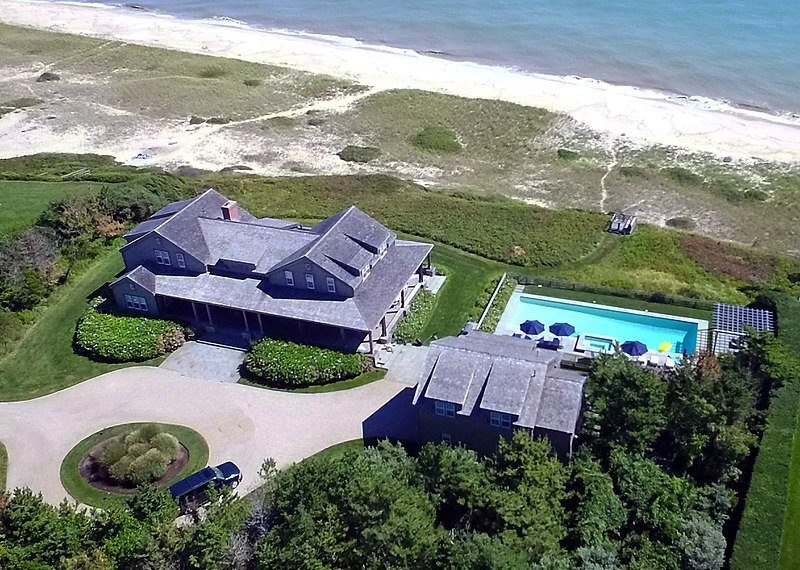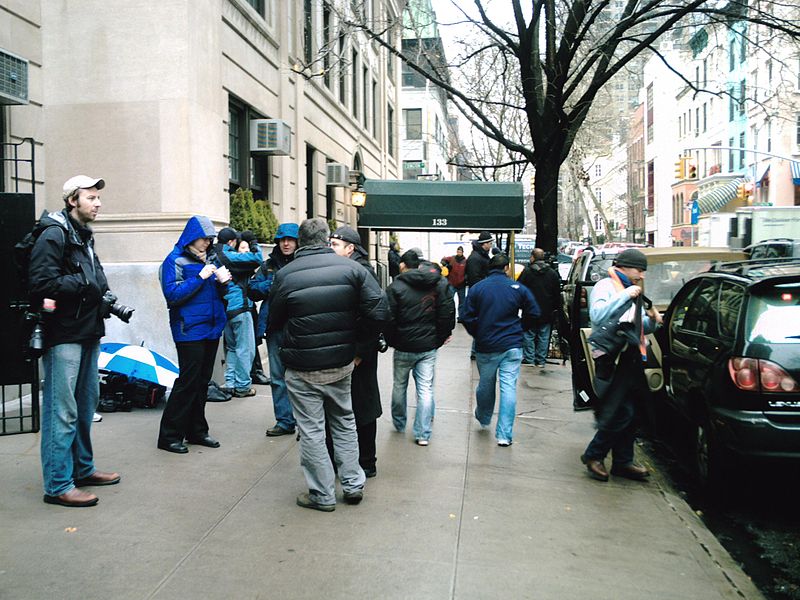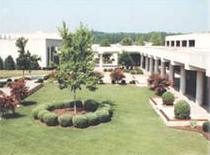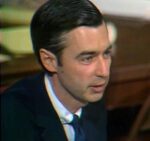It was the financial scandal of the century. One of the most respected figures on Wall Street, a man who was considered to have the investment Midas touch, had not actually invested a dime in the past fifteen years. Instead he’d been running the largest Ponzi scheme in history. In today’s Biographics, we take a look at the stunning rise and cataclysmic fall of Bernie Madoff.
Early Years
Bernard Lawrence Madoff was born on April 29th, 1938 in Queens New York. His parents, Ralph and Sylvia, were the children of East European Jews who had fled to America in the early 1900s to escape fervent anti-Semitism. The couple were married in 1932 at the height of the great depression. Ralph held a succession of jobs including as an assistant manager at a wholesale jewelry store. The family managed to move from the Bronx to the more upmarket Belmont Avenue in Brooklyn by the time that their second child Bernard was born. Older sister, Sondra, had been born in 1934, with brother Peter following in 1945.
In 1946 the Madoffs purchased their first home, a modest two-story red-brick with a small garage located in Laurelton, New York. This was a pretty, middle class suburban neighborhood with tree lined streets. The Madoffs were remembered by neighbors as a close, loving family and Bernie as a normal kid who enjoyed playing stickball and riding his bicycle around the neighborhood.
Bernie began his schooling in 1946. He seemed to be a fairly popular student but not a standout in any respects. Academically he was average at best. On the sports field he was even worse. Nor did he have any success with the girls. He had a crush on a girl named Elsa Lipson and made some muddled efforts to win her over. However, she chose his best friend, which cut Bernie deeply.

Bernie did end up with a girlfriend during his middle school years, a girl by the name of Marcia Mendhelson. However, he was constantly falling short of his peers academically, a fact which negatively affected his self-confidence. Marcia later recalled . . .
I remember he was always disappointed getting his grades because he didn’t make the honor society. He wanted to be in the honor classes. We all knew. He was always the struggler.
Marcia decided to end the relationship because she didn’t think that Bernie was smart enough for her.
His high school years were happier for Bernie than his primary school experiences. He joined the swim team, finally discovering something physical that he was good at. He took a couple of part time jobs. One was as a life-guard at the beach during the summer months while the other was as a laborer installing sprinkler systems in people’s yards. The combined incomes began to nicely build his bank account.
Bernie’s self confidence was lifted through his acceptance as one of the guys. He seemed to be a well-adjusted, happy young teen, though he still struggled academically. But he was developing a knack for deception. On one occasion in English class each student was to deliver an oral book report. Bernie hadn’t even opened the first page of his book. When it came time for him to address the class he rose and told the class that his book was called Hunting and Fishing by Peter Gunn. He then went on to make up names, dates and details of a book that never existed. The teacher missed the pun and the reference to popular TV detective, Peter Gunn. She gave him a high commendation.
While it was pretty clear to anyone who bothered to look that Bernie Madoff wasn’t book smart, he had an innate smartness that eluded all of his peers. That smartness revolved around the ability to make money. As his bank account swelled, and those of his ‘smarter’ classmates didn’t, he came to realize that money could be the thing that brought him fulfillment.
During his first year at Far Rockaway High, Bernie came across a popular, outgoing girl by the name of Ruthie Alpern. Her personality was the mirror opposite to his, but soon they were inseparable, not just at school, but also at each other’s houses.
Bernie graduated from Far Rockaway High School in 1956. While the rest of his classmates headed off to Harvard or Yale, he travelled south to enroll at the University of Alabama. Even though he told his friends that he had been recruited to the university’s swim team, it escaped nobody’s attention that getting into this university was much easier than any of the colleges up north.
But Bernie didn’t stay in Alabama for long. He was just too far away from his beloved Ruthie, back in New York. So, he enrolled at Hofstra College on Long Island, where he studied political science.
Catching the Investment Bug
Bernie’s father Ralph began dabbling in the stock market in the mid-1950’s and it was from him that Bernie’s fascination with the subject began. During his first year at Hofstra, he was already working as a stockbroker, though not holding a broker’s license. His father was also apparently trading illegally, although his mother, Sylvia had two securities companies registered to her name. When the Securities and Exchange Commission came down on her in 1963 for not filing financial statements, she closed down both businesses.
This was just one of a slew of financial turmoils that plagued the Madoff family in the 1960’s. Ralph was involved in a number of businesses with others that fell apart. On one occasion a $9000 lien was placed on the house, after which Ralph transferred the title the home to his wife to avoid not losing it.

In 1959, Bernie and Ruthie were married. The following year he graduated from the Hofstra College with a bachelor’s degree in political science. They moved into a one-bedroom apartment in Bayside, Queens. Bernie enlisted in the U.S. Army Reserves in order to void the draft. He was given a commission as a second lieutenant and assigned to the headquarters of the 1st Army, based on Governor’s Island in New York Harbor. The duties were light, involving administration. Bernie served for the next three and a half years, mainly on the weekends.
Out on His Own
After graduating from Hofstra, Bernie enrolled at the Brooklyn Law School. But this effort petered out within a year and he dropped out. He had, with the full backing of his wife, made the fateful decision to go out on his own and pursue his passion. At the age of 22, he registered his business, Bernard L. Madoff Investment Securities.
Madoff passed the General Securities Representative Exam, allowing him to get a stockbroker’s license. On the same day he passed the far more difficult General Securities Principal exam. He also passed this. So, in one day he gained the right to not only operate as a stock broker, but to run his own brokerage firm.
Bernie later claimed that he began the business with the aid of a $50,000 loan from his father in-law, Saul Alpern. Saul also provided space in his Manhattan Accounting firm as a base of operations.
Bernie specialized in buying and selling stocks that were too low for the big firms to worry about. This meant that he was dealing with very minor or brand-new companies. These were known as penny stocks. The work involved long hours, cold calls and little reward. After a few months, Bernie added a second arm to the business – investing on behalf of individuals.
Bernie’s first personal investment client was a dressmaker by the name of Carl Shapiro. He handed the newbie investor the sum of a hundred thousand dollars to invest on his behalf. Bernie grew this fund impressively and the two men developed a business relationship that would make them both fabulously wealthy.
On the basis of this success, Bernie set his sights higher. He designed an investment concept based on people who he called feeders who would find investors to bring in cash. He would then invest and grow that cash, keep a portion of it and disburse the rest back to the investor. As feeders, Bernie turned to the other people in his immediate business environment – his father in law Saul and the two young accountants who worked for him. The problem was that none of these three were registered stock brokers, which made their involvement illegal.
Over the next three years, his three feeder’s brought millions of dollars in investment finance to Bernie. The mom and pop investors were all making money, so everyone was happy. In just one deal in the late 1960’s, Bernie made a commission of $60,000 on the sale of 100,000 shares.
With the incredible success of the business, Bernie and Ruthie were able to move to suburban Long Island in 1966. By then they had a two-year-old named Mark, and Ruthie was pregnant with their second child, Andrew.
High Flyer
Around 1970, Bernie also moved his business. He relocated to 40 Exchange Place, just one block from the New York Stock Exchange. Bernie quickly embraced computer technology, outfitting his new office with the latest equipment. He also pushed the Cincinnati stock exchange to host a third market, getting them a quarter of a million dollars to upgrade their computer system. The result of this initiative was the National Association of Securities Dealers Automated Quotations, or NASDAQ.
The NASDAQ changed the game, allowing brokers to see quotes from other traders all over the world. Madoff’s business, which had already been flying high, now hit the stratosphere. He quickly established a reputation as the wizard of Wall Street. Over the next twenty years, he served in various capacities on the National Association of Securities Dealers, which was a self-regulatory body.
As the 1980’s drew to a close, Bernie was making north of a hundred million dollars a year. In 1990 he served as chairman of the NASDAQ, repeating in 1991 and 1993.
The Ponzi Scheme
According to Bernie’s own court testimony, he began his Ponzi scheme in 1991. However, many people believe that he had been doing it long before then. He couldn’t explain why he did it as he was amazingly successful in his legitimate business activities. He stated, “I had more than enough money to support my lifestyle and my family’s lifestyle. I didn’t need to do this for that . . . I don’t know why.”
The original Ponzi scheme was named for Charles Ponzi who promised returns of 50 percent on a 90-day investment in the 1920’s. The scheme uses income from new investors to pay promised interested rates to original investors. The word of these fabulous returns quickly spreads, attracting new investors and the scheme keeps perpetuating itself. Of course, the person behind the scheme rakes in a huge amount of commission off the top. Ponzi scammers encourage investors to stay in the game for as long as possible in order to maximize their profits. This ensures that plenty of money stays in the kitty. There is very little in the way of real reporting of returns.
At some point every Ponzi scheme will collapse. This will either occur when the scammer takes the money and does a runner, the cash flow dries up as it becomes more difficult to attract more investors or too many people pull out and demand the principal and interest be paid to them.
Because of his auspicious standing in the trading world, Madoff was above suspicion for many years. On top of this Bernie and Ruth had been huge political donors from 1991 onwards. They were supporters of the Democrat party, gifting many thousands of dollars to the Democratic Senatorial Campaign Committee. Members of the Madoff family served in positions of authority in the Security Industries and Financial Markets Association (SIFMA). Bernie himself contributed some 56,000 to SIFMA in the 2000’s.
In addition to the prestige of his position, Bernie was extremely charismatic. He came across as a person that people could trust. When this was combined with his stellar reputation as a genius investor, it was difficult for people to resist the temptation to invest their money with him. In fact, during the 2000’s people viewed it as a privilege to be given the opportunity to invest with his firm.
Bernie was also careful not to set his promised interest rate too high. He settled upon a rate of 12 percent which he found to be the perfect sweet spot to attract customers without raising suspicion.
The Unravelling
In 1992 a couple of people who had invested in the successor to Saul Alpern’s accounting company complained about irregularities to the U.S. Securities and Exchange Commission. The practice of drawing investors for Bernie had continued with the new owners of the accounting firm. On this occasion, the money was returned to these investors and no further action was taken.
In 1999. Harry Markopolis, the chief investment officer for options trading company Rampart Investment Management became aware that one of his company’s major trading partners was making investments with Madoff’s wealth fund management business and receiving constant returns of 1-2 percent per month. Markopolis was asked to study Madoff’s revenue stream in order to produce a replica model which would lure business away from Bernie and toward them.

According to Markopolis, within four minutes of looking at Bernie’s figures he knew that they were fake. There was none of the price volatility that was fundamental to financial investment. The interest rate reliability was simply too good to be true. He was convinced that Madoff was running a Ponzi scheme. He laid a formal complaint with the SEC in the spring of 2000. The SEC, however, refused to take action. It seems that they were just as spellbound by Bernie as the investing public.
But Markopolis did not give up. In 2001, he forwarded a second, more detailed, complaint to the SEC. But, once again the SEC failed to take action – this despite Markopolis offering to go undercover into the Madoff operation to obtain concrete proof that Bernie wasn’t actually trading.
In 2004, a lawyer for the Securities and Exchange Commission reported to her branch chief that her investigation into the actions of Bernie Madoff raised a number of red flags. However, she was told in no uncertain terms to shut down her Madoff investigation and focus on more important matters. It just so happened that senior official at the SEC was involved in a romantic relationship with Bernie’s niece Shana Madoff.
Madoff was able to keep the ruse going because investment kept flowing in right through the mid-2000s. But then, in 2008, with the economy constricting, the money pouring in began to dry up. With the stock market crash of September 29th, investment funds stopped up completely. What was worse, people were demanding their money and returns. But Bernie’s account at JP Morgan Chase did not have the funds to pay them. He owed around $7 billion, but only had between two and three hundred million to pay out.
The Consequence
By early December, 2008, Bernie knew that the game was up. On December 9th, he told his brother Peter about his fraudulent activities. That same day he revealed to his sons, Mark and Andrew, that he was finished and that his whole life as a successful investment broker had been one big lie.
Bernie’s sons immediately contacted a lawyer after leaving their father’s presence. He put them in touch with the SEC. Two days later, on December 11th, 2008, Bernie Madoff was arrested and charged with securities fraud. He managed to come up with the $10 million bail and retain his freedom. However, he was confined to house arrest at his Upper East Side penthouse apartment and was under 24-hour monitor surveillance.
On March 12, 2009, Madoff pleaded guilty to eleven federal felonies. Among them were securities fraud, money laundering and perjury. He claimed that no-one was inclined with or knew about his crime, which amounted to the largest Ponzi scheme in history.
At that March 12th hearing, Judge Denny Chin revoked Bernie’s bail on the grounds that he was flight risk and had him thrown into the Metropolitan Correctional Center. His lawyers tried to get this decision revoked but were unsuccessful. As a result, Bernie stayed in jail until his sentencing on June 29, 2009.

The Bankruptcy Trustee estimated that $36 billion was invested into Bernie’s Ponzi scheme. Half of that was returned to investors, with the rest going missing.
A week prior to sentencing, Madoff’s lawyer, Ira Sorkin, filed a pre-sentence letter to the judge requesting a term of 12 years for his client. This was largely based on insurance industry estimates that his life span was estimated to be a further 13 years. The prosecution time-out in request for a term of 150 years imprisonment.
Three days before delivering his sentence, Judge Chin ordered that $179 million worth of Bernie’s sets be seized. The Bankruptcy Trustee also sued Madoff’s sons, Mark and Andrew along with other family members for $198 million on the basis of negligence and breach of fiduciary duty.
On June 29, 2009, Judge Chin delivered his sentence. He followed through on the prosecution recommendation and gave Madoff 150 years of jail time. He noted at the time of delivering his sentence that they had not received any mitigating factor letters or testimonies and commented that ‘this absence of support ws telling.’
At the time of his sentencing, Madoff made the following comment . . .
I have left a legacy of shame, as some of my victims have pointed out, to my family and my grandchildren. This is something I will live in for the rest of my life. I’m sorry.
Despite these words, the judge did not belief that Madoff had been entirely forthcoming about the details of his massive scam, which Chin referred to as an ‘extraordinary evil.’ He also agreed with prosecutors that the Ponzi scam started long before the 1991 that Bernie had given.
After the sentencing, Ruthie Madoff made her first public statement with the following words . . .
I am breaking my silence now because my reluctance to speak has been interpreted as indifference or lack of sympathy for the victims of my husband Bernie’s crime, which is exactly the opposite of the truth. I am embarrassed and ashamed. Like everyone else, I feel betrayed and confused. The man who committed this horrible fraud is not the man whom I have known for all these years.
Bernie was confined to the Federal Corrections Institute Butner Medium, outside of Butner, North Carolina. He remains there to this day. It was reported in 2009 that he got into a fight with another elderly inmate, however, the Federal Bureau of Prisons denied this but said that he had been admitted to hospital for hypertension.
As of 2019, inmate #61727-054 is 81 years of age. He is scheduled for release on November 14, 2139, at which time he would be 201 years of age.
Sources
Andrew Kitrzman: Betrayal: The Life and Lies of Bernie Madoff
Diana B. Henriques: The Wizard of Lies
Colleen P. Eren: Bernie Madoff and the Crisis



